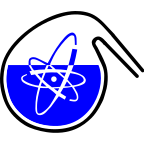Speaker
Description
On March 11, 2011, the Tohoku earthquake and the subsequent series of tsunamis severely damaged the Fukushima Dai-ichi nuclear power plants (FDNPPs). Failure of cooling systems led to explosions releasing radioactive gas and debris to the atmosphere along with cooling water that was directly discharged to the sea after being in contact with the nuclear fuel. The resulting release of 90Sr (T1/2 = 28.9 years), 137Cs (T1/2 = 30.17 years), and 134Cs (T1/2 = 2.07 years) was the largest ever uncontrolled input of artificial radionuclides into the ocean. This release increased pre-Fukushima concentrations in surface waters off the coast of the FDNPP that were on average 1 Bq·m−3 for 90Sr and 1−2Bq·m−3 for 137Cs by factors 1000 or more in 2011. Presented are methods for 90Sr and 137Cs, where 90Sr is analyzed in 20 liter seawater samples that have passed through a Cs absorber. Samples were spiked with stable 133Cs and processed through 5 ml of a wetted composite inorganic absorber of potassium-nickel hexacyanoferrate(II) (KNiFC) in a binding matrix of modified polyacrylonitrile (PAN). Gamma spectrometric measurements of 134Cs and 137Cs were performed using a Canberra high purity germanium well detector (GCW4030S) integrated with a cosmic guard and processed through a Lynx 32K channel integrated multi-channel analyzer. Calculated MDA’s for 134Cs and 137Cs are 0.4 mBq/kg and 0.2 mBq/kg respectively. Stable 133Cs in initial and final aliquots was analyzed on an Element 2 ICP-MS Thermo Fisher Scientific. Average recoveries were 98.62% and corrections were applied to measured Cs activities. 90Sr activity was determined via separation chemistry of its 90Y daughter. Samples spiked with stable Yttrium underwent iron hydroxide co-precipitation and purification using a DGA resin. 90Y beta decay was measured using a GM-25-5 Beta Multicounter by Risø National Laboratory. Average recovery determined by ICP-MS analysis of stable Yttrium was 81.5% and a MDA for 90Sr = 0.4 mBq. The application of Fukushima isotope ratios of 137Cs and 90Sr can be applied as longer term Fukushima water mass tracers, which include tracing North Pacific circulation and mixing.

